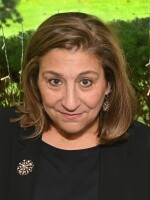Nestled between Kansas City’s downtown business district and the River Market are a bunch of buildings that once literally hummed with the sound of fashion.
From the 1940s through the early 1980s, Kansas City had one of the largest garment industries in the nation. It spanned the area roughly from Wyandotte to Washington and Sixth to Ninth Streets. The local manufacturers there created some of the country’s best-known brands: The Donnelly Garment Company, commonly known as Nelly Don, and YouthCraft, maker of coats and dresses. At its peak the industry was estimated to support over 75 companies.
A small museum in the historic Poindexter Building on the southeast corner of Eighth and Broadway has displayed some of the iconic designs, machinery and photographs since 2002. The Kansas City Museum is now expanding its collection into a building across the street.
Working in the district

As a teenager in the late 1940s, Steve Glorioso worked as a packer in his father’s company, Krest Originals. Joe Glorioso, who died just this summer, was the son of Sicilian immigrants. He founded the popular dress line in a factory on the second floor of a building at Eighth and Main. On the first floor was Hammer Brothers, which sold zippers.
The young Glorioso remembers having a bird's eye view of the intersection. The large windows stayed open all summer in the non-air conditioned loft. He recalls a beehive of activity.
"You'd see men carrying big bolts of material, you'd see people with rolling racks, two inch pipes made into wheels and bar and hang dresses on the top, moving dresses from one factory to another."
Joe Glorioso was an anomaly as an Italian among mostly Jewish owners.
Ethnicity didn't matter to the young Glorioso. He loved getting out to make deliveries to the upscale clothes stores.
"My dad would say 'All right, here’s 20 dresses on the rolling rack,'" Glorioso says. "'Take them to Harzfeld's or Adler's,' which were local companies in the Petticoat Lane area."
Many of the clothes were not sold locally. Traveling salesmen shopped them around to small mom and pop stores across the rural Midwest. An artist trained at the Kansas City Art Institute, Joe Glorioso would go to New York and sketch dresses in the windows along Fifth Avenue. He’d come back and modify the designs for his rural, more conservative, clientele.
"I remember his biggest seller was a sailor dress," says Glorioso. "He customized that down, the hemline he would change, kind of widen the girth of the dress."
It was Glorioso's No.1 seller for years.
Small town sales
Harvey Fried, one of the founders of the Garment Industry Museum, worked for his father at the Fried-Siegel Co. and Styline Co. after college and military service. The companies made dresses and coats for juniors.

Early on, Fried remembers, his father sent him out on a sales trip to a place he'd never heard of: Eagleville, Missouri.
When he arrived, he was dismayed to learn the town had only 70 people.
But he found a thriving retail district, with three or four clothing stores, including Fried's customer, Pearson's Clothing Company.
"I went in and saw Mr. Pearson and he was nice enough to buy something from me," Fried recalls. "And when I got through I said 'Mr. Pearson, I notice there are three ladies apparel stores on the square here. How do you make it?' He said 'there's no big city anywhere close.'"
Back then people knew their buyers and their buyers knew their customers.
"We’d show a sample line," Fried says. "Somebody would say 'I like it, it looks great. You know, Mabel Jones , she'd like that in green.'" And a sale was made.
The down side: the salesman knew Mabel wouldn’t want anyone else in town to have that green dress and he’d only buy one.
Another successful Kansas City company was YouthCraft Coats and Suits.
By the time the company closed in 1983, the coats–with their fabric-covered buttons and fur collars–were in stores from Dallas to New York.
At one time, owner Leon Karosen employed 450 people , including 95-year-old Alice Vogt.

"I was on the machine until my husband died," Vogt told me. "Then Mr. Karosen called me into the office and he said, 'We’ve been after you ever since you came to go on the floor.' And I said 'I don’t think I can do it.' He said 'we all believe you can.'"
Alice Vogt became a supervisor of 42 people working on the factory floor. She remembers all of them and who worked where.
"The small parts, pocket, cuff or something, Jo Busamani had that and she was over here.," Vogt says pointing to a spot on her dining room table. "And then Josette did something on the back and then it came over here for Eileen and (her group) finished it there."
She still talks to her surviving team members. She says they take pride in having created clothes that dressed women and men across the country.
"They were well made," she says. "You felt like you’d accomplished something."
There is a kind of resurgence of a fashion scene in Kansas City, but it’s still very much a niche market.
Maybe the expansion of the Garment Industry Museum downtown will inspire local designers as it draws attention to the industry that was once a major economic driver in Kansas City.
Laura Ziegler is a community engagement reporter and producer. You can reach her on Twitter @laurazig or email at lauraz@kcur.org.




